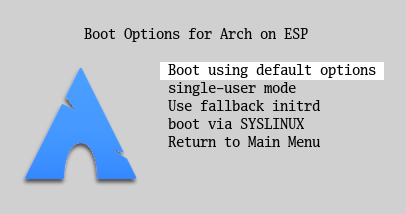Main Menu
Boot Windows From Syslinux Efi
вторник 25 сентября admin 67
M1 license test. Take advantage of our limited time offer and gain access to unlimited downloads for FREE! Zedload.com provides 24/7 fast download access to the most recent releases. Our members download database is updated on a daily basis. We currently have 276,209 full downloads including categories such as: software, movies, games, tv, adult movies, music, ebooks, apps and much more.
Today let’s dwell on how to install / boot any modern version of Windows (including Windows 7 and Windows 10) on an outdated computer with a BIOS firmware (that does not support the modern ) with a hard disk that use a GPT partition table. The need to perform such a trick has arisen when I tried to install Windows Server 2008 R2 on HP DL380 G8 server (HP DL servers do not support EFI yet) with local disks with a total capacity of more than 4 TB in RAID 5. In a standard Windows installation on an MBR disk, only 2 TB are available in the system. You cannot allocate or access the remaining 2 TB of the disk space for Windows. The only way to take advantage of all available disk space is to convert disk layout to GPT format. This article describes how to configure Windows to boot from a hard disk that is marked in the GPT partition table on a computer with classic BIOS (non-UEFI) or in the Legacy BIOS mode.
The Windows operating system can not boot from GPT disks on old BIOS systems. To work around this limitation, we will move the Windows bootloader (BCD) to a separate small USB flash drive (or HDD drive) with the MBR partition table.
For GParted live booting from USB flash drive on a MBR machine, syslinux is the boot loader. Therefore the config file is /EFI/boot/grub.cfg. The system to automatically detect the X-window configuration, you can put the boot parameters as. Boot to WinPE through PXE with an UEFI system. (BIOS) now you should boot syslinux.efi (UEFI). Linux.c32 is a BIOS only tool that has not been migrated to UEFI yet (I mean is not able to load an efi image). The same with chainload,pxechn, wimboot, etc. How to boot a UEFI based Windows OS via a Linux PXE server.
This flash drive will only be used to start the Windows bootloader, which then must transfer control to the main Windows image located on the disk with GPT partition table. The instruction is universal and should work both in Windows 7 and Windows 10 and in any other supported x86 and x64 Windows editions. Contents: • • • • • Advantages GPT over MBR What advantages does GUID Partition Table (GPT), a new format of table partitioning on a hard drives, gives? GPT allows to bypass a number of limitations of the classic MBR Partition Table.
:max_bytes(150000):strip_icc()/LiveUbuntuDesktop-588b9baf3df78caebc598b2e.jpg)
Let’s highlight the major points: • Support for hard drives over 2.2TB (maximum available GPT disk size is 9.4 ZettaBytes (9.4 x 1021 byte)); • Support for up to 128 partitions on the disk (only 4 partitions in MBR available); • High reliability achieved by duplicating the partition table at multiple locations on the disk and verifying the partition table using cyclic redundancy check (CRC). Thus, the disk partition structure will not be lost if the first disk sectors are damaged; • No need to use logical partitions subject to various errors. Booting Windows from a GPT disk According to the official Microsoft documentation, all its OSs starting from Windows Server 2003 SP1 support volumes with GPT markup as the data disks. However, only 64-bit Windows versions installed on motherboards supporting the new UEFI specification (Unified Extensible Firmware Interface) are able to boot from a GPT volume. Thus, it will not be possible to install or boot Windows from a GPT disk on older computers with classic BIOS firmware.
